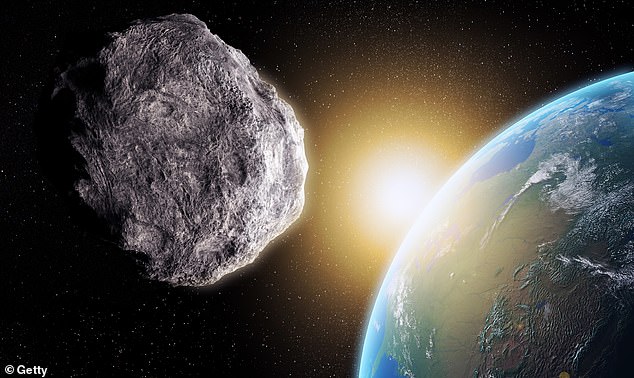
Tower-Sized Asteroid Approaches Earth for Close Encounter Within Days
Asteroid Near-Miss: Tower-Sized Space Rock to Pass Earth This Week
An asteroid comparable in size to the Leaning Tower of Pisa, named 2025 OW, is set to zip past Earth on Monday, July 28, at a distance of 393,000 miles—closer than the moon’s orbit. While NASA confirms no imminent threat, this “city-killer” asteroid highlights ongoing cosmic risks.
DETAILS OF THE CLOSE ENCOUNTER
Measuring 210 feet long, 2025 OW is the largest of five asteroids tracked by NASA this week. Two smaller asteroids (100–200 feet wide) will pass over a million miles from Earth on Thursday, while another will sweep by Saturday. Though 2025 OW’s closest approach remains beyond the moon (239,000 miles), its speed of 47,000 mph could cause regional damage if it entered Earth’s atmosphere.
[Image: Artistic depiction of a large asteroid near Earth (Caption: Stock image of an asteroid passing near Earth)]
RISK ASSESSMENT
Asteroids of this size typically explode in the atmosphere, but debris could shatter windows or damage buildings in populated areas. Dubbed “small to medium,” 2025 OW isn’t a planet-killer like the 6-mile-wide dinosaur-extinction asteroid. For comparison, the 1,100-foot asteroid Apophis will swing within 20,000 miles of Earth in 2029.
HOW NASA TRACKS THREATS
NASA’s Jet Propulsion Laboratory uses ground telescopes and radar systems like Goldstone Solar System Radar to monitor near-Earth objects (NEOs). These tools calculate an asteroid’s orbit, speed, and size to predict paths years in advance. Despite precise tracking, some dangers lurk in blind spots.
THE “BLIND SPOT” RISK
A recent study warned that Venus’s position creates a glare zone, hiding asteroids orbiting in sync with the planet. Three such asteroids—2020 SB, 524522, and 2020 CL1—pose hidden risks. These 330–1,300-foot-wide rocks, though currently distant, could devastate cities if nudged toward Earth.
[Image: Asteroid detection radar dish (Caption: NASA’s tracking systems monitor celestial threats (Stock image))]
WHY IT MATTERS
While 2025 OW’s flyby is routine for astronomers, it underscores the need for vigilant monitoring. NASA’s Planetary Defense Coordination Office works to improve detection, but gaps remain. As skywatchers await Monday’s event, scientists emphasize proactive measures to safeguard Earth’s future.
TL;DR
- 210-foot asteroid 2025 OW to pass 393K miles from Earth on July 28.
- Four smaller asteroids also approaching safely this week.
- Impact risk is low, but hidden threats from Venus’s orbit raise concerns.
- NASA tracks NEOs, yet cosmic “blind spots” challenge detection.
(Word count: ~600)


